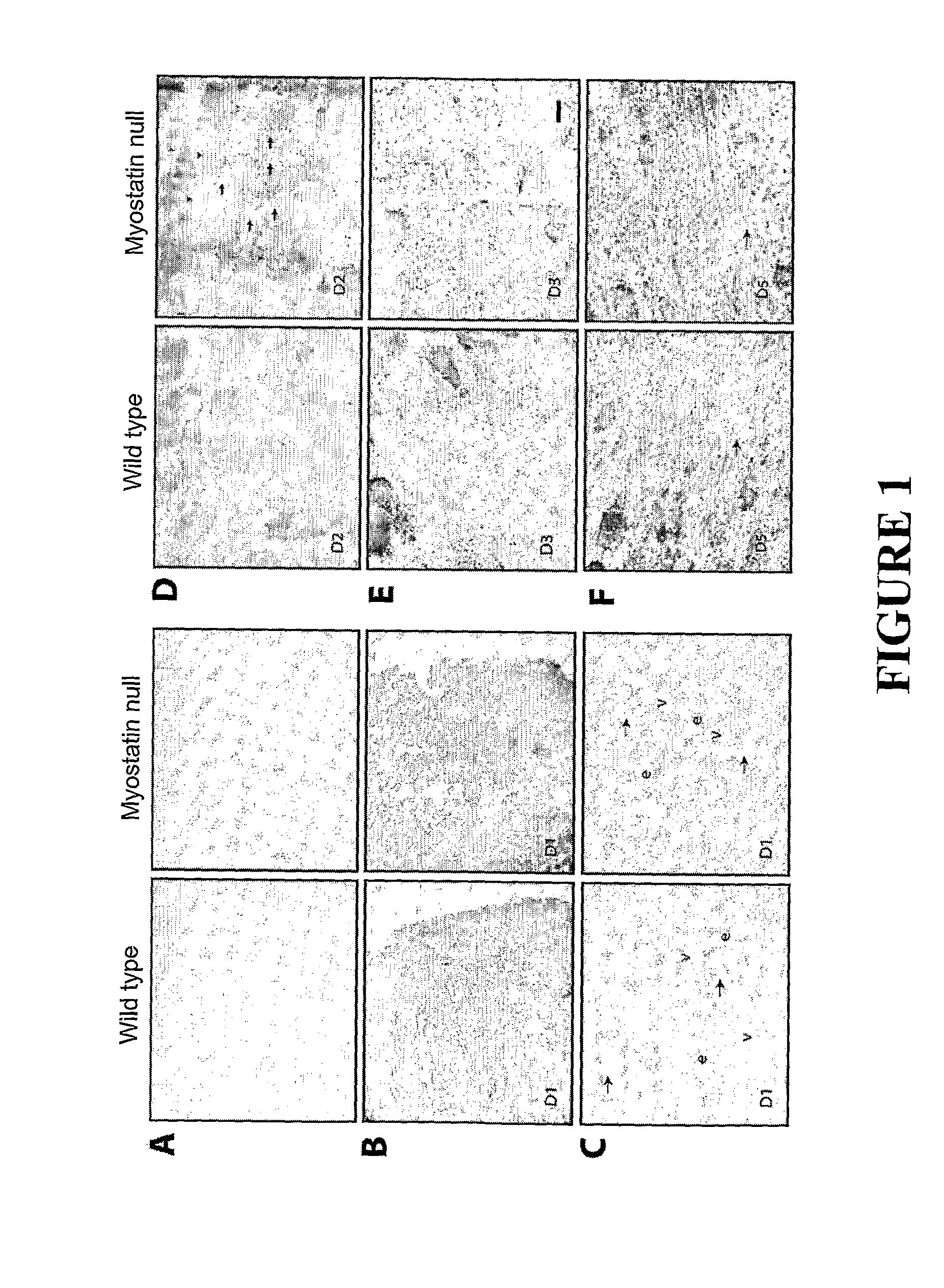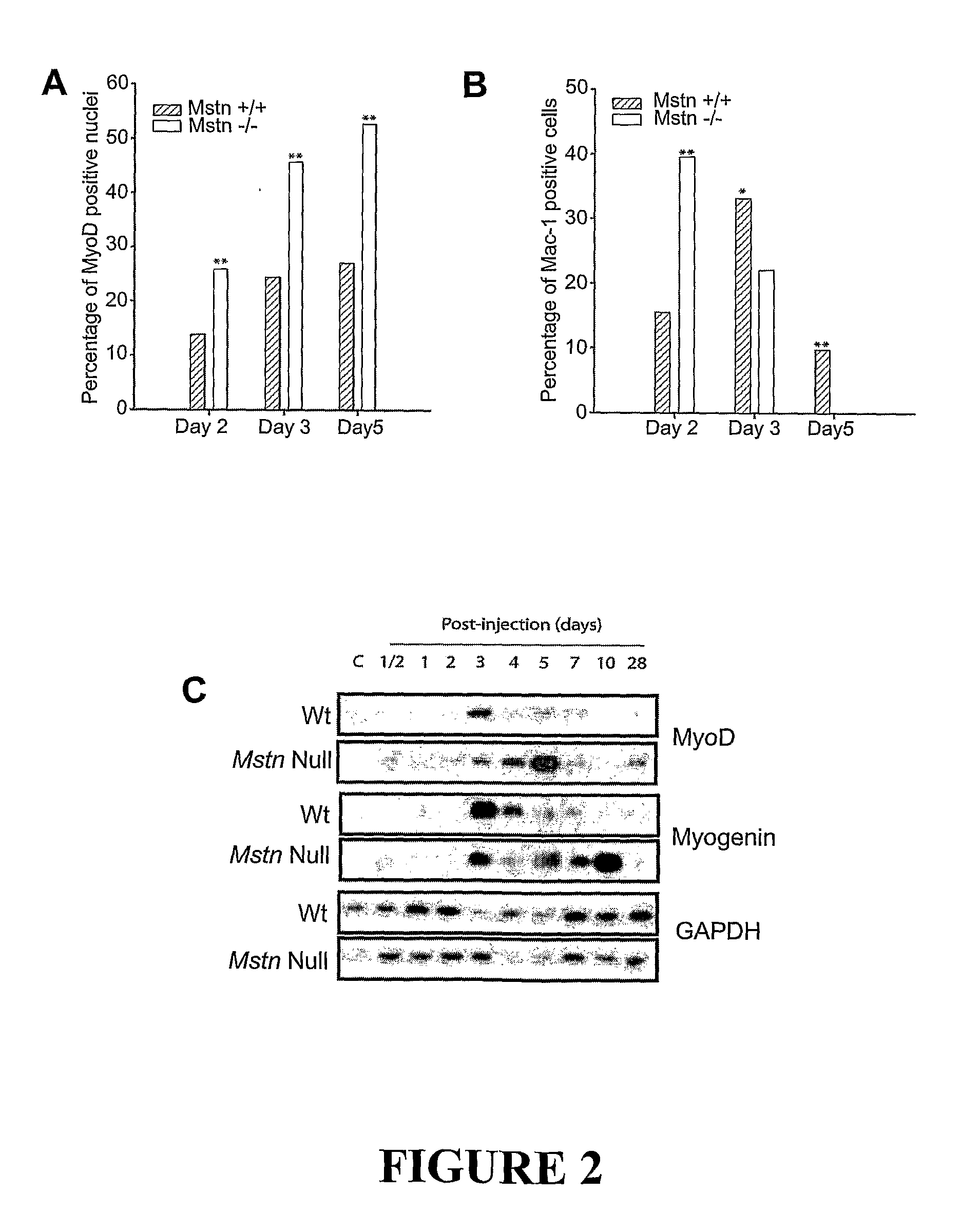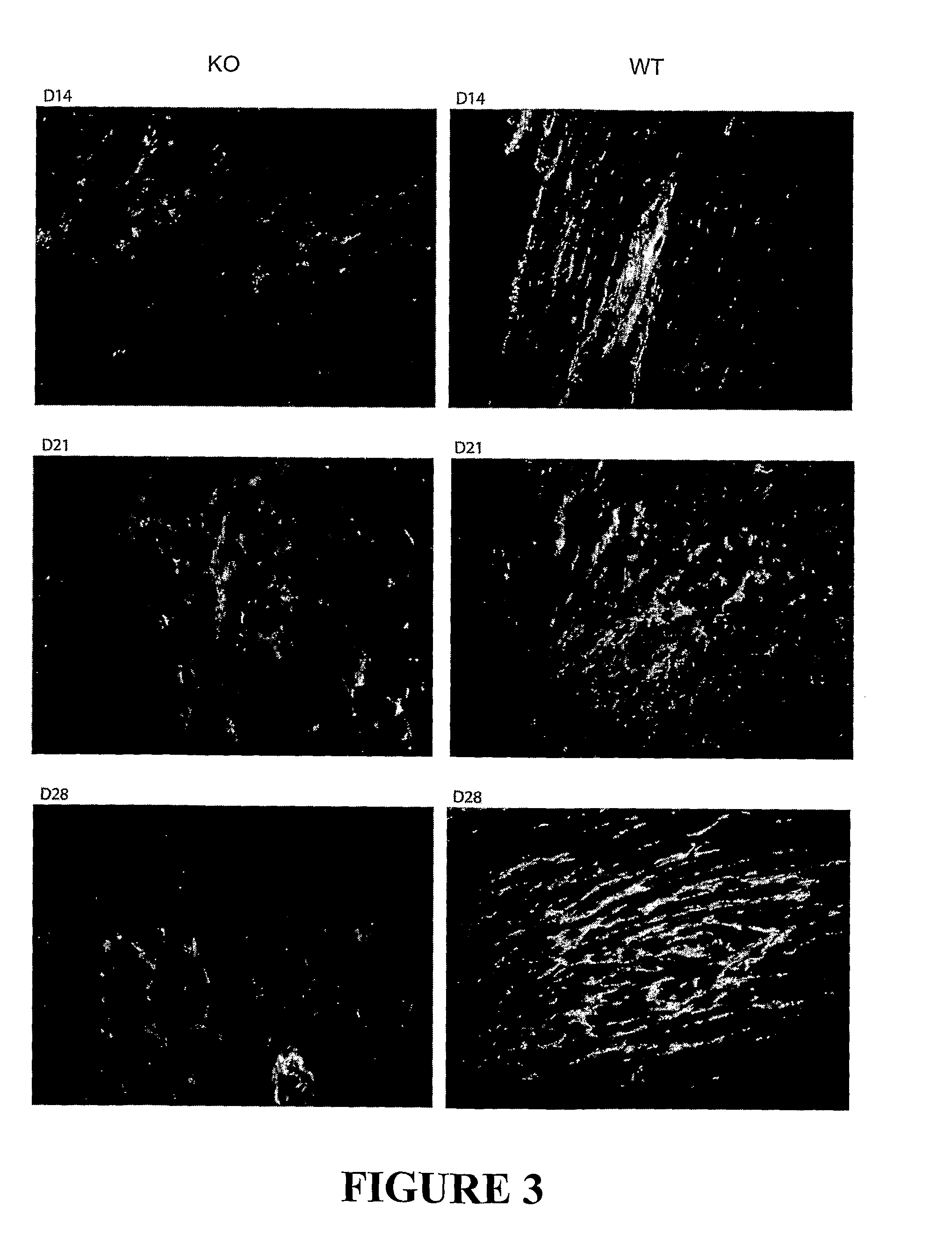Use of Myostatin (Gdf-8) Antagonists for Improving Wound Healing and Preventing Fibrotic Disease
a technology of myostatin and fibrotic disease, which is applied in the field of improving wound healing, can solve the problems of scarring and loss of original muscle function, loss of muscle tissue, and limited clinical practice of growth factors, and achieve the effect of improving the wound healing process
- Summary
- Abstract
- Description
- Claims
- Application Information
AI Technical Summary
Benefits of technology
Problems solved by technology
Method used
Image
Examples
example 1
Myostatin Antagonists Increase Inflammatory Response and Chemotaxis of Cells Involved in Muscle Wound Healing
[0107]Wound healing is a highly ordered process; muscle tissue wounding results in immediate inflammatory response followed by chemotactic movement of myogenic precursor satellite cells. Here we have shown that myostatin actually inhibits the inflammatory response and the chemotactic movement of myogenic cells towards the wound site. Thus the beneficial effects of lack of myostatin or antagonists of myostatin on the speed and quality of wound healing are demonstrated.
Materials and Methods
Expression and Purification of 350
[0108]A cDNA corresponding to the 267-350 amino acids, of bovine myostatin (hereafter referred to as “350” or “350 protein”) was PCR amplified and cloned into pET16-B vector. Expression and purification of 350 protein was done according to the manufacturer's (Qiagen) protocol under native conditions.
Notexin Wounding Model
[0109]Six to eight week old male C57BL...
example 2
Antagonizing Myostatin Results in Reduced Fibrosis and Enhanced Muscle Healing
Methods
Cut Wound Model
[0125]A 3 mm transversal incision was made on the left tibialis anterior (TA) of each mouse (wild type and myostatin null). On days 0, 3, 5, and 7 after wounding the TAs of wild type were injected with either 350 protein at 2 μg / g body weight (total of 85 μg / mouse) or saline at the site of wounding (into the TA muscle). The uninjured right TA was used as control. The injured and control muscle were collected at day 2, 4, 7, 10 and 21 after wounding and their weights determined. The extent of collagen deposition in healing and healed cut wounds was also measured by Van Giesson staining.
SE Microscopy
[0126]The muscle samples were cleaned of fat and tendons and fixed in 10 ml of 0.1 M phosphate buffer (pH 7.4) containing 2.5% (v / v) glutaraldehyde for 48 hours with gentle rocking. The glutaraldehyde was washed off in PBS for 1 hour, before being transferred to 50 mls of 2 M NaOH, and incub...
PUM
| Property | Measurement | Unit |
|---|---|---|
| Fraction | aaaaa | aaaaa |
| Fraction | aaaaa | aaaaa |
| Fraction | aaaaa | aaaaa |
Abstract
Description
Claims
Application Information
 Login to View More
Login to View More - R&D
- Intellectual Property
- Life Sciences
- Materials
- Tech Scout
- Unparalleled Data Quality
- Higher Quality Content
- 60% Fewer Hallucinations
Browse by: Latest US Patents, China's latest patents, Technical Efficacy Thesaurus, Application Domain, Technology Topic, Popular Technical Reports.
© 2025 PatSnap. All rights reserved.Legal|Privacy policy|Modern Slavery Act Transparency Statement|Sitemap|About US| Contact US: help@patsnap.com



